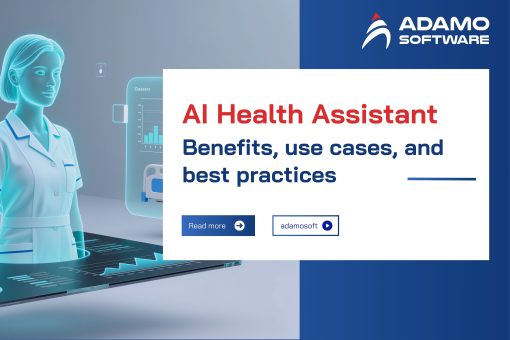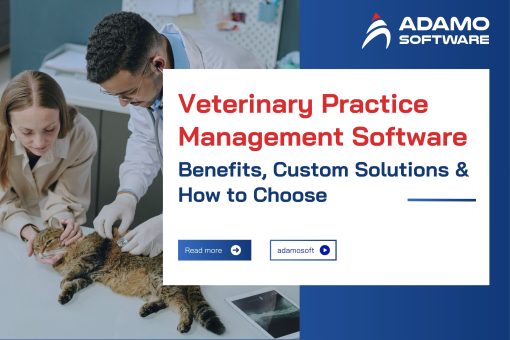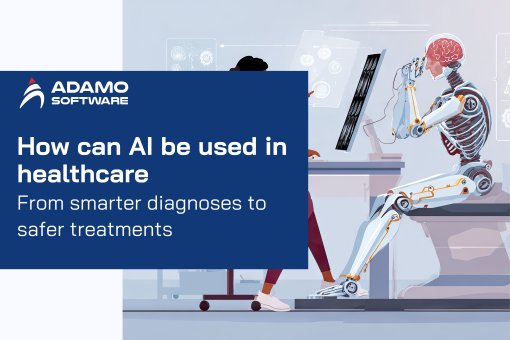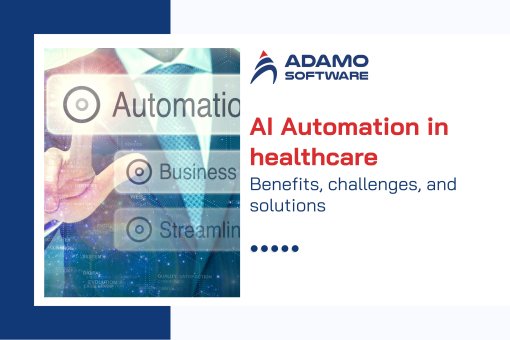Integrate EHR with Healthcare CRM: How it enhances business efficiency

Increased competition in the modern market requires that healthcare facilities work efficiently. The easiest way to improve it is to integrate EHR with healthcare CRM. In our article, we will discuss the influence that both systems have on each other. HIM and HIE are important to healthcare providers but for different reasons, as discussed below. When used together, separated patient data enhances the care delivery from the providers’ point of view. It also improves operational processes, facilitates timely and effective patient relations, and arrives at improved patient health.
It’s necessary to understand what the abbreviation EHR means before turning to the definition of healthcare CRM. An electronic health record, or EHR, is a system that captures data about a patient’s medical history. A healthcare CRM system is a system for managing patient relationships. Both offer all-around information on the patient schedules. This would facilitate the procedures of contact with patients and the control of the patient care plans.
The list of advantages to integrating EHR with healthcare CRM is vast. Providers can reduce overheads, gain better information about the patients, and communicate with patients efficiently. This integration assists healthcare organizations to more effectively deliver care that is particularly relevant to individual patient needs. Thus, it enhances patient satisfaction which is an important factor in patient loyalty.
But these integration processes also bring some problems, like data privacy and system compatibility. To overcome these challenges, strategic planning, professional recommendations, and organizational practice knowledge are helpful. The challenges mentioned above can be met by the following successful integration strategies.
I. Integrate EHR with Healthcare CRM: Understand the basics.
To enhance healthcare operations, it is crucial to integrate EHR with the Healthcare CRM. This integration takes advantage of two formidable systems each can handle different aspects of patient information and correspondence. However, to ascertain the importance of the BSC, each system must be described separately.
1. What is EHR?
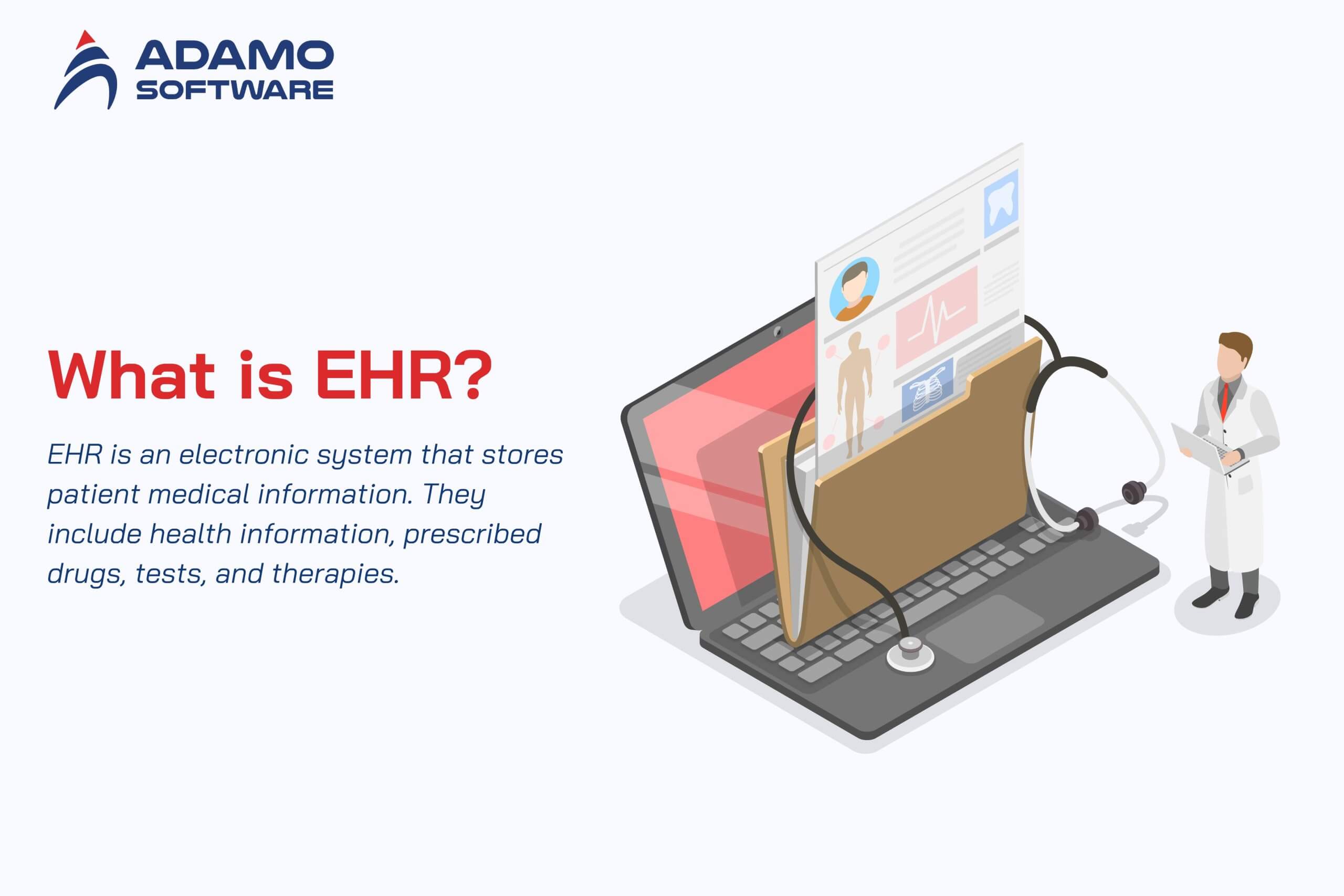
EHR is an electronic system that stores patient medical information. They include health information, prescribed drugs, tests, and therapies. It enables the healthcare provider to get proper information about the patients within the shortest time. Hence, it improves the patient’s health. EHR systems facilitate clinical operations through patient data shared across departments and hospitals. Consequently, they eliminate errors, bring together the patient information needed at different places, and provide continuity of care.
2. What is Healthcare CRM?
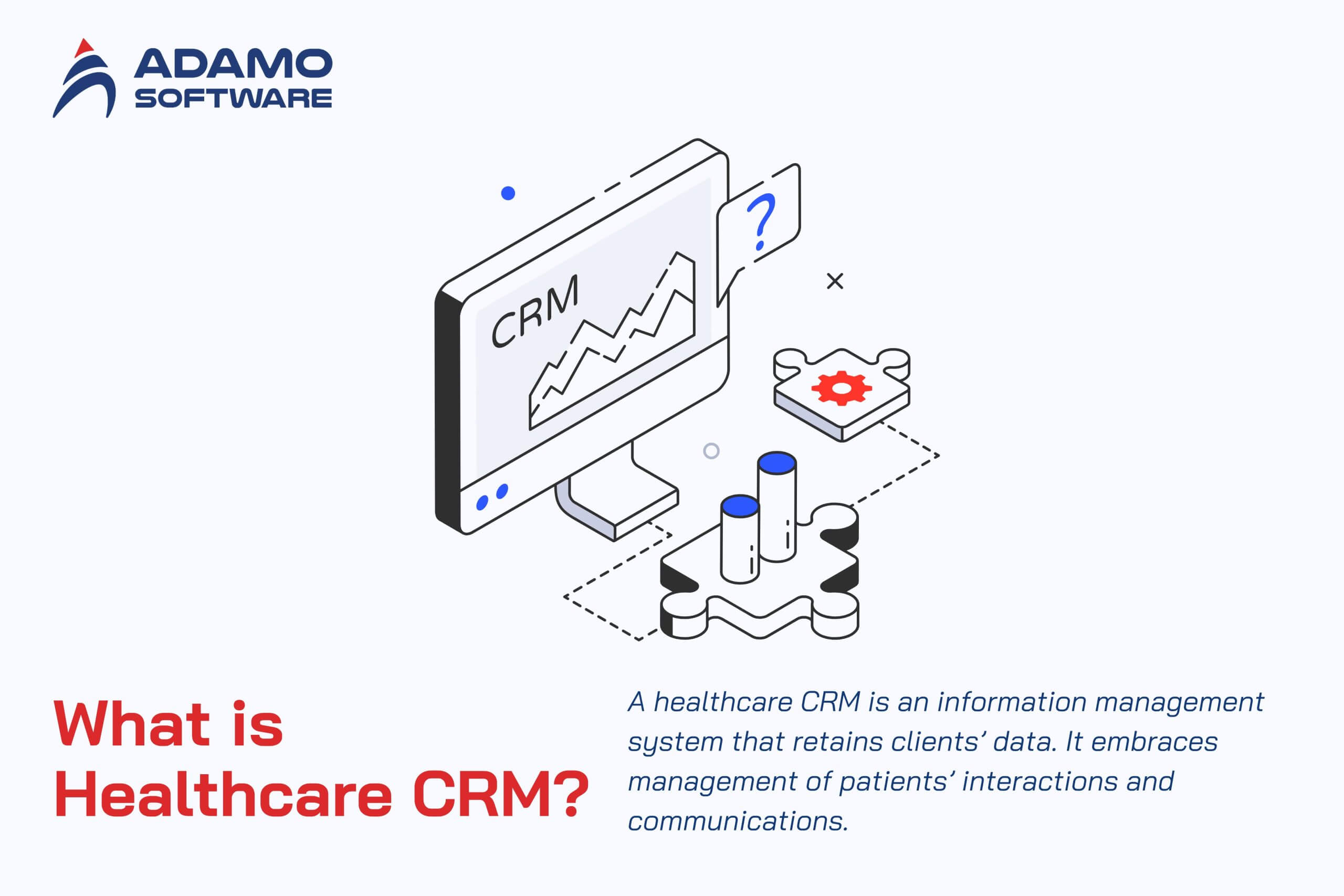
Healthcare CRM is intended to embrace the management of patients’ interactions and communications. It is a part of the health sector that deals with scheduling, responding to, and programming interpersonal interactions with patients. A healthcare CRM is an information management system that retains clients’ data. The date includes clients’ preferences, previous contact details, and feedback on healthcare services. Therefore, CRM ensures that the relationship between the client a systems and healthcare facilities is strengthened. It allows for automated messaging, including appointment reminders, follow-ups, and hopeful wellness messages. They all lead to better patient comprehension and therefore satisfaction as well.
Why Introducing EHR Within Care – MLM Has Added Value?
As healthcare providers implement EHR with Healthcare CRM, they design a single coherent platform that connects clinical and other information. HHS streamlines the patient record. Integration helps multiple care teams identify the patient’s needs easily and treat them according to their requirements. For example, doctors can view patients’ records, preferences, and previous communication to improve treatment regimens and patient satisfaction.
For healthcare CRM to work closely with EHR, organizations must factor in the compatibility of the two and how they will exchange data securely. When implemented properly, the combined system can enhance workflow, decrease administrative burden, and increase patient satisfaction. As a result, it enhances the business aspect in the healthcare sector.
II. Benefits of integrating EHR with Healthcare CRM
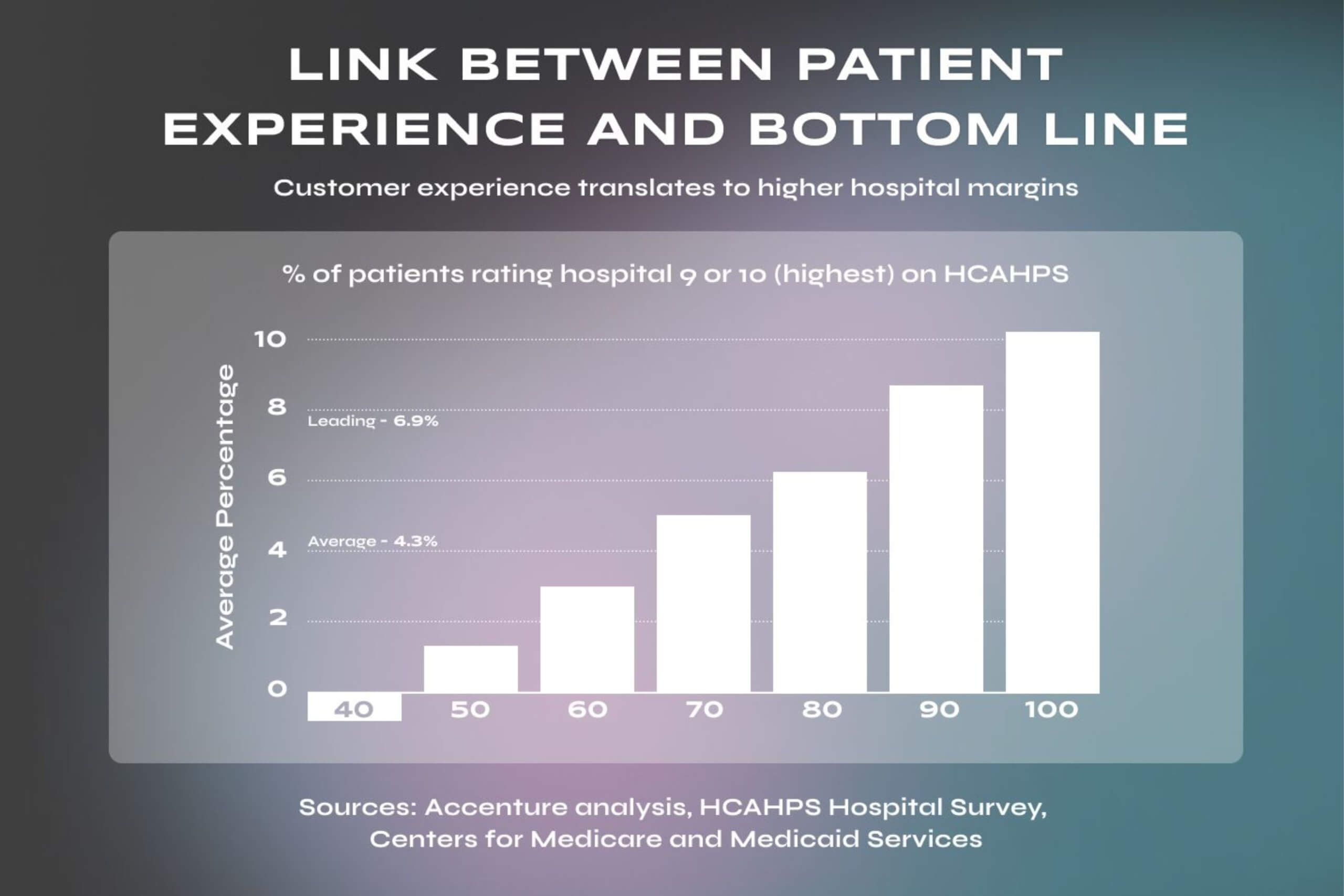
Corporations can integrate EHR with healthcare CRM to increase efficiency and the quality of patient treatment. EHR is connected to healthcare CRM. These integrated EHR and CRM systems provide value by consolidating patient information that is both clinical and non-clinical. The decision to integrate EHR with healthcare CRM can help healthcare organizations achieve operational efficiency. They can also deliver patient-specific care and improve patient satisfaction. Here is a breakdown of a few of the advantages of this integration.
1. Enhanced Patient Engagement
Integrating EHR with healthcare CRM enhances patient engagement. With a single system combining clinical records and communication histories, healthcare providers can better understand patient needs and preferences. This unified system helps to personalize outreach with automated appointment reminders, follow-up messages, and wellness tips. They all match each patient’s specific needs and treatment history. Patients who feel more connected and informed will stay engaged in their care, leading to better health outcomes and higher patient satisfaction. By integrating EHR with Healthcare CRM, providers create an experience that encourages patients to participate in their wellness journey.
2. Improved Operational Efficiency
The other substantial benefit to integrating EHR with healthcare CRM is productivity. As all patient information is within one place, the need for interoperability between systems and entering the same data into another system is eliminated. Because of this, there is a reduction in the time that providers spend performing administrative tasks. Instead, more time is spent fulfilling patients’ needs. A cost-effective working system may also allow for fewer patient mistakes. All patient records are in one database.
Moreover, when EHR is combined with Healthcare CRM, signatory organizations can minimize the use of paperwork. This would have consumed a lot of time and resources, but the information is updated and available on the fly.
3. Streamlined Care Coordination
When used in conjunction with EHR, Healthcare CRM enables coordinating care. The opportunities for its immediate use are available for doctors, nurses, and other support staff. They can have a single record of the patient chart that would include basic patient clinical information and communication records of the patient. This correspondence allows care teams to work together to develop treatment care plans, follow-up care, and other management processes. Better coordination between departments reduces fall gaps in care. It keeps healthcare givers updated on their patient’s health and their desired plans.
Depending on how they integrate EHR with Healthcare CRM, it becomes easy for the healthcare delivery systems to be on the same page. It offers care to the patient while caring about them and their future health issues.
4. Data-Driven Insights
A powerful advantage of integrating EHR with healthcare CRM is the ability to generate actionable insights from data. When all patient data is in one place, healthcare providers can analyze trends, track health outcomes, and identify patterns within their patient populations. These insights help providers understand which treatment plans are most effective and where improvements might be needed.
For example, data analytics can reveal which groups of patients are more likely to need follow-ups or additional support. This allows providers to tailor outreach accordingly. When healthcare providers integrate EHR with Healthcare CRM, they have a powerful tool for making data-driven decisions. Therefore, they can improve patient care and optimize internal processes.
5. Enhanced Patient Retention
The other advantage to Integrate EHR with healthcare CRM is enhanced patient retention. The patient will more frequently be seen giving allegiance to that specific provider. Especially when patients feel that the care provided is according to their needs and the health care provider understands their clinical history. This loyalty increases when patients are in regular contact with their caregivers and get reminded about the necessary treatments.
Furthermore, only with a single system can caregivers manage patient feedback. The reason is that both medical and interaction-relevant data are located in one system. This enhances the patient’s satisfaction and makes the patient compliant. It is easy to maintain a steady flow of patients involved in future treatments.
6. Compliance and Security Benefits
There are compliance and security benefits, which implies that the benefits of data integration structure are universal. Another benefit is the technical, but not less significant, advantage for deciding to integrate EHR with healthcare CRM. It improves security and compliance with the rules. In today’s world, healthcare providers are legally bound to follow several rules and regulations, such as HIPAA. The rules control the ways that private information is used and shared. Meeting these regulatory standards can be facilitated through a single system. EHR-CRM integrates state-of-the-art security measures.
When EHR is linked to the healthcare CRM, patient data is easily secured through an access code, data encryption, and automated checks. This helps to find out if there has been unauthorized access or if there are security risks. It also helps to maintain security for the patients and their identity. Hence, it enhances the faith that patients have in the healthcare provider.
7. More Personalized Marketing and Outreach
An integrated EHR-CRM system enables more effective marketing and outreach efforts. When providers integrate EHR with Healthcare CRM, they can create targeted marketing campaigns based on patient history, demographic data, and treatment preferences.
For example, a provider could send wellness tips tailored to different age groups or offer reminders for routine check-ups for patients with specific conditions. This outreach is crucial for promoting preventive care, which helps keep patients healthy and engaged with the healthcare organization. Additionally, by personalizing outreach, providers can build stronger relationships with patients, who appreciate receiving information and support relevant to their health journey.
8. Cost Savings and Revenue Growth
When organizations decide to integrate EHR with healthcare CRM, there is often a potential for cost reduction and revenue generation. Sustaining operational efficiencies entails that time that would have been spent less paperwork and money on activities that can be combined. If greater patient loyalty is also attained, then improved and more steady cash flows result. The reason is that patients who use a particular service are likely to return often.
Furthermore, using lean means to enable activities thus reducing errors and rectifications on cost related to wastage of resources. In the long run, the organization management that integrates EHR with Healthcare CRM can enjoy better financial health. Since the system increases efficiency, satisfies patients, and enhances the overall growth of the organization.
Conclusively, EHR, when combined with Healthcare CRM, brings benefits that make healthcare providers effective, efficient, and patient-centered. Apart from enhancing care coordination and the health information used. This integration forges better patient care loyalty and adherence to legal requirements, enhancing health delivery systems.
III. Challenges of integrating EHR with Healthcare CRM
When healthcare providers decide to integrate EHR with Healthcare CRM there are definite advantages. However, there are certain limitations as well. Integrating EHR and CRM systems involves considerable considerations of technical, strategic, and security nature. These requirements analyze the key issues that organizations can encounter on the way to the implementation of EHR with Healthcare CRM.
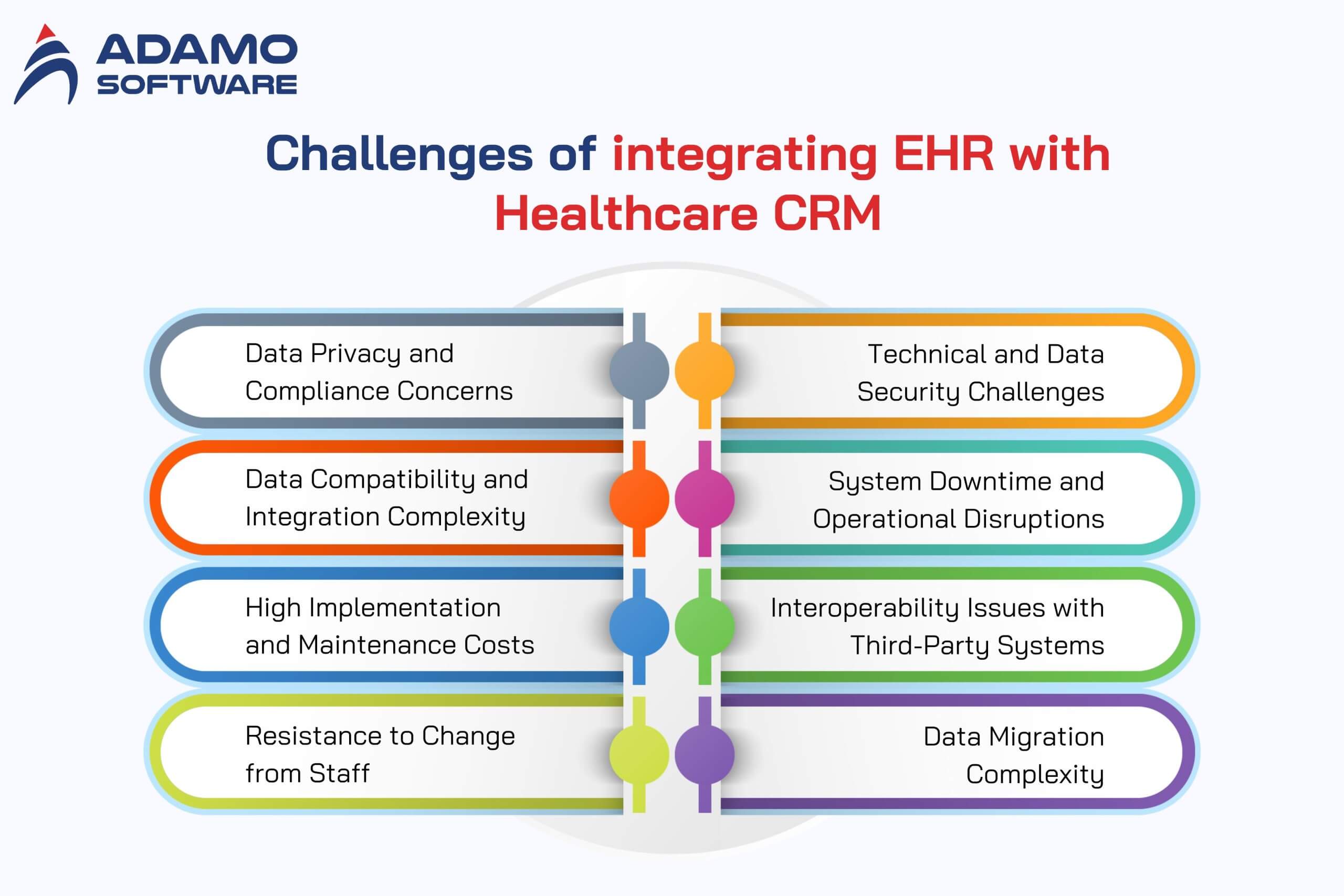
1. Data Privacy and Compliance Concerns
The most suitable consideration when businesses integrate EHR with healthcare CRM is the compatibility issues with current laws on user data privileges. Most data captured in EHR systems is sensitive to individual privacy, and EHR systems are developed to incorporate this sensitivity. Slightly more commonly used in fields such as customer services, and CRM systems. However, it may need to be altered to accommodate such specific regulations. There must be strict measures for data protection, encryption methods, and the option of accessing the patient’s details to only those who deserve it. Not achieving these may result in leakage of data and also other legal concerns. Thus, privacy and legal compliance are major concerns in integration.
2. Data Compatibility and Integration Complexity
Another significant hurdle to integrate EHR with healthcare CRM is the complexity of data compatibility. EHR and CRM systems often use different data formats and structures. This can lead to issues when trying to merge the two systems. EHR systems are often designed to hold medical data in a highly structured way. CRM systems are more flexible, storing data on patient interactions, preferences, and communications.
Converting and aligning these two data sets can be challenging, requiring skilled IT professionals who understand both systems well. Data mapping and transformation processes are essential but can be time-consuming and costly.
3. High Implementation and Maintenance Costs
It may cost a significant amount of money to integrate EHR with healthcare CRM. This might take several different formats and may need specialized software, software development, and expertise to ensure there are clean interfaces between business systems. Others are the recurrent costs such as updating costing of software, storage of data, and maintenance of the system. For small-scale healthcare organizations, such costs may be AXED. Even in extensive organizations, the budget for this integration must be tight because any problems during implementation will increase the price.
4. Resistance to Change from Staff
The change may be a barrier. It presents organizational culture issues for representatives of the different integrated organizations, such as the healthcare providers and staff. Healthcare providers needing to incorporate EHR with Healthcare CRM must educate employees about addressing clinical and non-clinical data. It entails a change in work processes.
Thus, it is difficult for the staff, most of whom are used to the conventional EHR systems. For the new integrated system to work effectively, staff training and support are vital so everyone can learn how to manage the new system. Inadequate training can lead to the improper use of the integrated system, as people turn back to the prior systems and practices.
5. Technical and Data Security Challenges
When organizations integrate EHR with Healthcare CRM, they often encounter technical challenges related to data security. EHR systems must meet stringent security requirements, which CRM systems may not inherently possess. Ensuring the combined system meets these security standards is essential to protecting patient data. Integrating these two systems requires strong data encryption, regular security audits, and continuous monitoring for vulnerabilities. The technical setup should be robust enough to prevent unauthorized access and to quickly detect any potential breaches.
6. System Downtime and Operational Disruptions
To integrate EHR with healthcare CRM can lead to operational disruptions, especially during implementation. Migrating data, setting up integrations, and testing the combined system may require downtime. For healthcare providers who rely on their EHR system daily, even short downtime can disrupt patient care. Carefully planning the integration to minimize downtime and avoid disruptions to day-to-day operations is essential. A phased approach may be useful, gradually implementing the integration in stages to allow for adjustments and reduce the impact on patient services.
7. Interoperability Issues with Third-Party Systems
Further, it is evident that, in addition to integrate EHR with healthcare CRM, HL7 devotes multiple third-party systems. Using EHR with Healthcare CRM produces issues with integrating with other systems since they are not compatible with the new configurations.
For instance, billing systems patient portals or lab results might not easily corporal with EHR-CRM systems. Interoperability means developing common interfaces AND possibly embedding software layers, also called middleware, to achieve the integration of the various information systems. The inability to overcome these challenges means that valuable data is not shared, resulting in gaps in patients’ treatment. If these issues of interoperability are not solved, then it results in the data missing part. Hence the patient requirement also becomes incomplete.
8. Data Migration Complexity
Last but not least, when healthcare providers struggle to combine EHR with Healthcare CRM is the problem of data transfer. Patient data from both systems must be migrated to the new system. This means no data should be lost and resolved more than once. The process can be even more complicated if the EHR or CRM system has been implemented for a long time and accumulates the patient’s records. Usually, data migration is time-consuming. A critical process that needs planning, data validation, and testing to prevent such challenges as wrong and missing information or file duplication. This harms patient care and undermines the new system’s efficacy.
In sum, to integrate EHR with healthcare CRM when making the above decision outweighs the challenges as depicted in this paper. Stakeholders in the sphere of healthcare must analyze the data security and compatibility issues. The cost of its integration, and the training of personnel to achieve the integration’s goals. Focusing on these potential issues, healthcare organizations can adapt EHR with Healthcare CRM with great outcomes. They can provide more effective, individual, and secure patient care.
You can explore more about What is EMR in Healthcare: Types, Features, Cost here.
IV. Tips for successful EHR CRM integration
Integrating EHR with Healthcare CRM can significantly improve healthcare efficiency and patient care, but successful integration requires careful planning and execution. Here are essential tips to help healthcare providers smoothly integrate EHR with Healthcare CRM and fully leverage the benefits of a unified system.

1. Define Clear Goals and Objectives
When beginning the process of implementing EHR with Healthcare CRM, it is therefore important to set some goals. Consider what the integration aims to achieve. This could include efficiency in patient relations, working procedures, analysis, and data organization or patient loyalty. Specific goals provide direction in adopting the system to drive the implementation process as the healthcare providers focus on the most relevant aspects of the system.
2. Ensure Data Compatibility
The opportunity to achieve synergy between EHR and Healthcare CRM also has several requirements, the first of which is data compatibility. EHR and CRM can employ various data formats, which is why one should ensure the compatibility of the systems. Healthcare providers may require fields to be aligned and standardized so that patient data transfer between EHR and CRM can be done effectively. Tools for handling data integration could ease the conversion. Therefore, there will be no mishap as far as information transit is concerned.
3. Prioritize Data Security and Compliance
Healthcare data is sensitive, so maintaining data security is crucial when choosing to integrate EHR with Healthcare CRM. Strict data protection measures should be implemented, such as encryption, access controls, and regular security audits. Additionally, ensure the system complies with healthcare regulations like HIPAA. Since compliance not only secures patient information but also builds patient trust. Selecting a CRM system to meet healthcare security standards can ease the process.
4. Start with a Phased Approach
Integrating EHR with healthcare CRM can be challenging, so it is better to organize this process in several steps. Start with the base functionalities that the app needs to have and expand the app’s capabilities as time goes on. It is a detailed strategy. The healthcare providers can conduct each phase, note down the problematic areas, and make the corrections before making the staff use them. Patient information and appointment booking provide a basic set to which more complex options can be added.
5. Engage and Train Staff
Staff training is essential for successful integration. Ensure all team members understand how to use the new system and how integrating EHR with Healthcare CRM benefits their workflows. Training sessions can cover navigating the system, entering and accessing data, and handling patient interactions. Ongoing support and resources for staff also help ease the transition, ensuring that everyone is comfortable and confident with the new setup.
6. Work with Experienced Integration Partners
Healthcare providers who have limited IT support can benefit greatly from integration partners with adequate experience. Contacting specialists familiar with the integration of EHR and healthcare CRM will help alleviate the problem of short implementation time. It will solve technical issues associated with proper data synchronization. Selecting a good partner also provides assistance and guidance during integration. Hence it makes it easier to experience.
7. Monitor Performance and Adjust as Needed
After choosing to integrate EHR with Healthcare CRM, regularly monitor the system’s performance. Evaluate whether the integrated system is meeting the initial goals and improving efficiency, patient satisfaction, and data accessibility. Collect feedback from staff and patients to understand what’s working well and where adjustments might be needed. Fine-tuning the system over time can ensure that it remains effective and beneficial as patient needs evolve.
8. Ensure Seamless Interoperability with Other Systems
Some common integrated systems are billing, lab results, and patient portal systems. It is therefore crucial that these systems, if implemented independently, work seamlessly with the integrated EHR-CRM. Ensure that the integrated system can interact with other systems so there will be no break in data. Interoperability is beneficial in supporting the stream of information across the departments, hence enhancing efficiency and even patient care.
The tips above should help healthcare providers avoid pitfalls to integrate EHR with healthcare CRM. Good integration provides better ways of operating. It also enhances the quality of relations a facility has with patients. Besides, it ensures safe patient data and a strong system that fits in the modern healthcare facility.
V. How does Adamo Software work with your EHR-EMR integration?
Adamo Software focuses on using EHR with Healthcare CRM for healthcare providers to form a single system of informatics that can improve patient care and the functioning of the healthcare organization. We communicate regularly with the institutions they serve to identify healthcare-specific concerns concerning EHR and CRM that would allow the coherent, real-time duplicates of all patient data. Adamo’s team also aims to develop safe solutions that are HIPAA compliant. Thus, we gain the trust of patients while at the same time satisfying HIPAA standards.

Thus, using their approach, Adamo Software deals with such technical aspects as data mapping and system integration for seamless exchange of data between EHR and CRM. This makes their work more efficient and increases the ability of healthcare staff to yield individualized working results. Providers can first rely on expert evaluation and brainstorming to integrate EHR with healthcare CRM from Adamo Software. Second, the provider can be confident that the integration customized for him will be efficient and reliable when implemented by healthcare software experts form Adamo Software.
FAQs
1. How are EHR and CRM systems different?
EHR (Electronic Health Record) systems and CRM (Customer Relationship Management) systems have distinct roles within healthcare. EHR systems focus on clinical information, helping providers manage patients’ medical histories, treatments, and lab results. EHRs are essential for storing and organizing critical health data to ensure continuity and accuracy in patient care.
In contrast, CRM systems manage patient interactions and engagement by storing communication history, scheduling appointments, and handling billing. CRM is designed to enhance the patient’s experience by helping healthcare organizations manage outreach, build loyalty, and track engagement. When healthcare providers integrate EHR with Healthcare CRM, they bring together clinical and engagement data, leading to more coordinated and efficient care.
2. What should be considered to future-proof integrated EHR and CRM systems?
When healthcare considers implementing EHR with Healthcare CRM, they should allow the system to continue to function as technology and needs progress. Ease of updating is another consideration that incorporates a system compatible with new technologies that support API-based integration or open standard is preferred. Selecting a system that meets requirements currently in force regarding patients’ data protection laws, like HIPAA. This would improve the patient’s data protection path as it becomes updated. Also, it is crucial to enhance security measures continuously since there are emerging new threats to patient information.
3. How scalable are integrated EHR and CRM systems in the long run?
The scalability of an integrated EHR and CRM system depends on its ability to grow with a healthcare organization’s expanding needs. When providers integrate EHR with Healthcare CRM, choose solutions that support increased data storage, more complex functionalities, and additional users over time. Cloud-based systems often offer flexible scalability. It enables healthcare providers to add new features and expand usage as needed without requiring a full overhaul.
Additionally, having a modular design in the integration allows organizations to add new functionalities. They can be AI-driven analytics or patient engagement tools, as their services grow. Scalability ensures that the integrated EHR-CRM system can accommodate patient volumes or service offerings. Therefore, it can maintain seamless operations and patient care efficiency.







